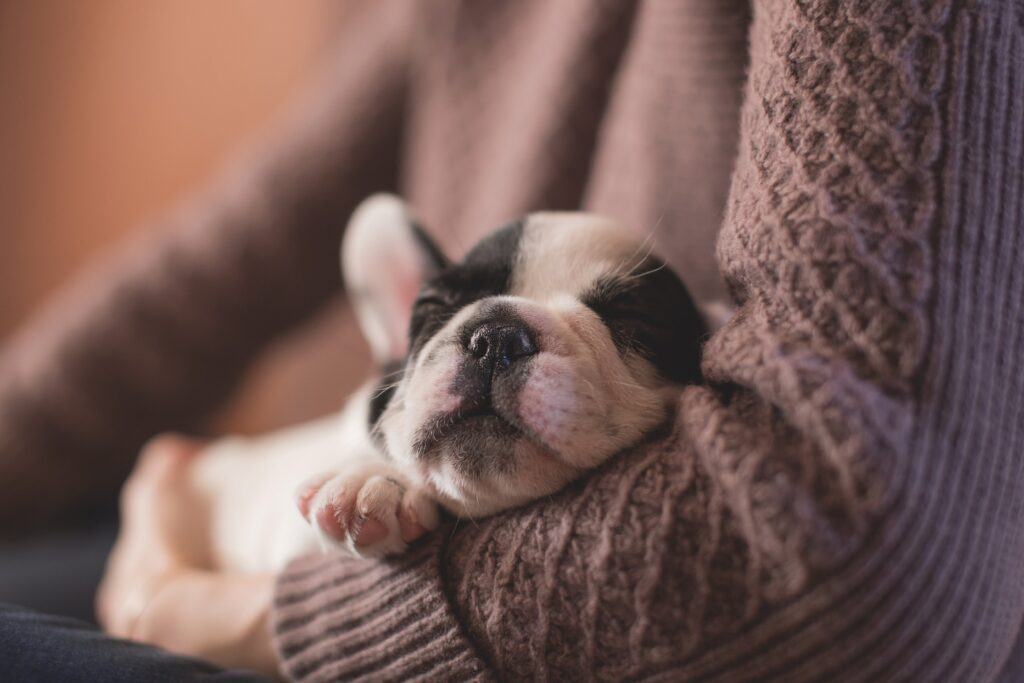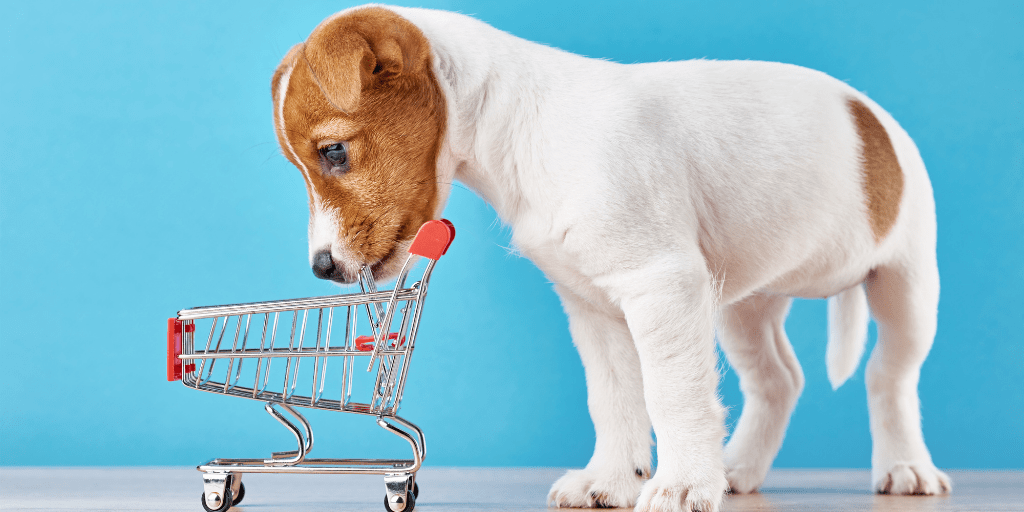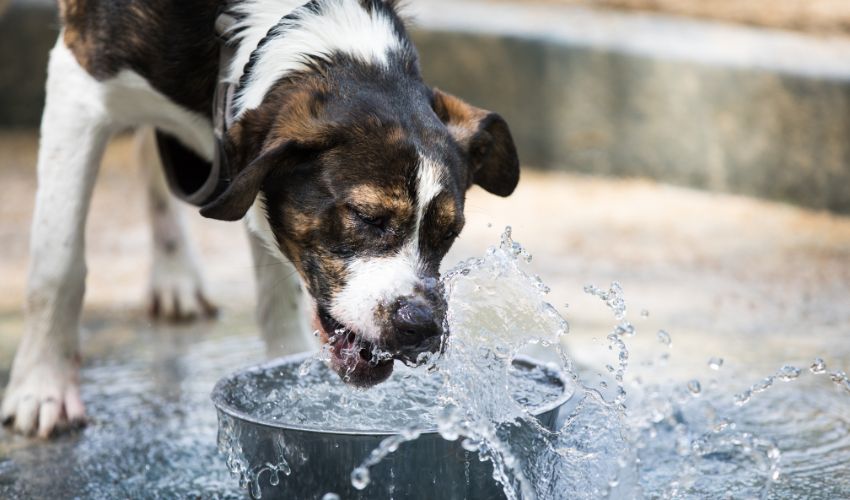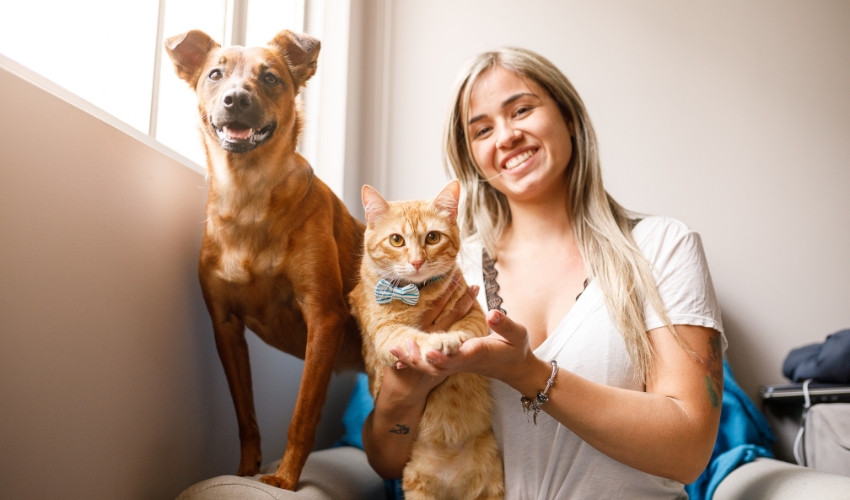Many people believe that dogs do dream. Most dog owners have noticed different behavior while their fur babies are asleep– leg twitching, flicking paws, whimpering– which gives the impression that they are dreaming about something.
Unlike humans, our furry best friends cannot lie down on a therapist’s couch and have their dreams interpreted. It can only be assumed that dogs have dreams. Though it is impossible to get first-hand experience to account for their dreams, scientific evidence indicates that pups do, dream, indeed. Studies show that at the structural level, the brains of dogs are similar to that of humans. Similarly, the brain wave patterns of both humans and pups go through similar stages of electrical activity observed during sleep. This is consistent with the idea that sleep is being experienced.
Like humans, our fur babies and all other mammals go through several sleep stages. There are periods of wakefulness, followed by rapid eye movement (REM) sleep, and non-rapid eye movement sleep.
Rapid eye movement (REM) sleep is the stage where we usually experience dreams. It is when most memorable and vivid dreams happen.
Neuroscientist Matt Wilson experimented on rats to find out more about mammals and dreams. In 2001, he recorded rats’ brain activity as they ran through a maze, and saw that the cells had lit up in a distinct pattern. What they had discovered is that similarly, during REM sleep, the same exact pattern was observed– as if the rats’ brain had been replaying their trip to the maze while asleep. This study suggests that animals tend to dream the same way humans do.
What do dogs dream about?
Of course, there is no way for us fur parents to know what exactly our doggos dream about. We can only guess that it involves running around the field, playing with their humans, and getting as many treats as they can. Research suggests that what animals dream about can be traced back to their real experiences. This means that your furry best friend may be dreaming about your morning stroll, or play fetch after lunch, or even the traumatic nail clipping experience from your trip to the pet groomer.
There are even speculations that dogs may even have bad dreams and nightmares. This can stem from bad experiences such as quarrel with other dogs, fear of bathing or getting wet, and even accidentally stepping on their foot.
Notice your dog’s subsequent behavior when faced with a crisis as they may also exhibit the same while they are dreaming about it as they sleep. In an interview with a Harvard Psychologist, one owner reported that he suspected his dog– who hates being bathed– had a nightmare about bath time. Usually after bath time, this dog would run over and hide behind or under his owner, like it was a ritual after bath time. One day, the owner observed that his fur baby is having a dream. When the dog woke up, he bolted to his owner’s location and hid under him.


Signs your dog is dreaming
There is no need for you to bring your dogs in for a brain surgery or electrical recordings just to know whether or not they are dreaming. Just watch your fur baby as they doze off.
- Observe your dogs as they sleep and notice what they do as their sleep gets deeper and deeper.
- As the dog’s sleep becomes deeper, his breathing will become more regular.
- After 20-30 minutes, you will notice a change in their breathing– it will become irregular and more shallow. During this stage, watch out for odd muscle twitches or other movement. You can even see your dog’s eyes moving behind its close lids.This suggests that your dog is now dreaming.
How often do dogs dream?
Some pooch dream more than others. Research suggests that the length and frequency of dreams may be related to a dog’s size and age.
Smaller and younger dogs may dream more than bigger and older dogs. This is because younger dogs absorb more new information everyday than older dogs.
According to the National Sleep Foundation, dogs spend about half their day sleeping. Puppies, senior dogs, and certain breed types get even more hours of sleep in a day.Similarly, larger breed types like Labrador that have an active day outside may sleep more soundly and experience longer REM sleep, giving them more time to dream.
Dreaming vs. Sleep Disorder
Sleep disorders in dogs are uncommon in general. Disorders known to dogs include sleep apnea, insomnia, narcolepsy, and REM sleep behavior disorder.
Studies show that older dogs are prone to more disorders however, not all sleep disorders are common in older dogs. Dogs with canine cognitive dysfunction syndrome– a form of dog dementia, often have insomnia. However, sleep apnea, narcolepsy, and REM sleep behavior disorder tends to appear more likely in younger dogs.
Different odd behaviors can manifest while dogs are asleep. Some behavior may include limb movements and whimpering. However, if it includes violent limb movements, barking, growling, chewing, or even biting while asleep, this can be a sign of REM sleep behavior disorder.
If you are still unsure whether this is just your dog having a dream or it is already a sleep disorder, take a quick trip to your neighborhood vet and consult your dog’s behavior with them. Should your fur bestfriend be diagnosed with a sleeping disorder, generally it be improved and managed with your vet’s advice.
















